-
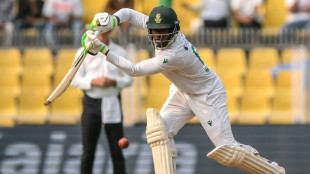 Muthusamy, Jansen put South Africa on top in second India Test
Muthusamy, Jansen put South Africa on top in second India Test
-
Rubio lands in Geneva for talks on Ukraine plan
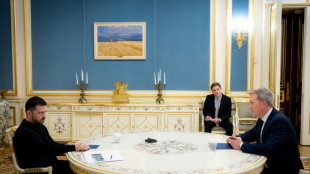
-
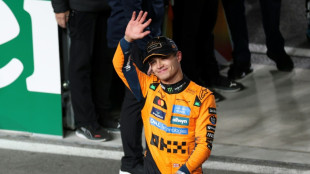 Norris and Piastri disqualified from Las Vegas GP
Norris and Piastri disqualified from Las Vegas GP
-
Slovenia holds crunch vote on contested assisted dying law
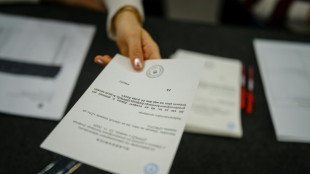
-
 Aonishiki beomes first Ukrainian to win sumo tournament
Aonishiki beomes first Ukrainian to win sumo tournament
-
Holders Australia drawn with New Zealand in Rugby League World Cup

-
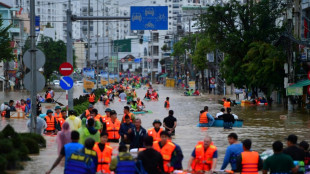 Vietnam flooding kills at least 90
Vietnam flooding kills at least 90
-
Muthusamy's maiden Test century powers South Africa to 428-7

-
 Myanmar junta says nearly 1,600 foreigners arrested in scam hub raids
Myanmar junta says nearly 1,600 foreigners arrested in scam hub raids
-
US signals room for negotiation on Ukraine plan ahead of talks

-
 Verstappen wins Las Vegas F1 Grand Prix, Norris edges closer to crown
Verstappen wins Las Vegas F1 Grand Prix, Norris edges closer to crown
-
Muthusamy anchors South Africa to 316-6 in second India Test

-
 Vietnam flood death toll rises to 90
Vietnam flood death toll rises to 90
-
US denies pushing Russian 'wish list' as Ukraine plan

-
 Harden's 55 leads Clippers win as Pistons streak hits 12
Harden's 55 leads Clippers win as Pistons streak hits 12
-
Kim's first top-10 in 14 years as Ballester wins maiden pro title

-
 Gotham crowned NWSL champions after Lavelle breaks Spirit
Gotham crowned NWSL champions after Lavelle breaks Spirit
-
Trump signals room for negotiation on Ukraine plan ahead of talks

-
 Head shapes up as solution for Australia's opening woes
Head shapes up as solution for Australia's opening woes
-
Tomorrowland bets on Chinese dance music fans with first indoor event

-
 England slammed as 'brainless' after first Ashes Test capitulation
England slammed as 'brainless' after first Ashes Test capitulation
-
Slovenia to hold new vote on contested assisted dying law
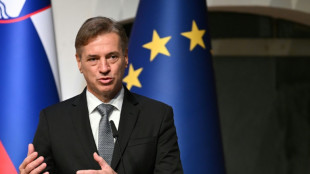
-
 'Beer tastes better' for Eramsus after win over Irish
'Beer tastes better' for Eramsus after win over Irish
-
No.1 Jeeno leads by six at LPGA Tour Championship

-
 Neres double fires Napoli top in Italy
Neres double fires Napoli top in Italy
-
Bielle-Biarrey masterclass helps France hold off Australia

-
 Pogba returns in Monaco loss as PSG stay top in France
Pogba returns in Monaco loss as PSG stay top in France
-
COP30: Key reactions to climate deal

-
 What did countries agree to at COP30?
What did countries agree to at COP30?
-
Harden's club-record 55 points leads Clippers over Hornets

-
 Amazon climate deal a 'win' for global unity but fossil fuels untouched
Amazon climate deal a 'win' for global unity but fossil fuels untouched
-
Boos, blowups and last-minute pause as a chaotic COP30 closes out

-
 Farrell proud of Ireland after 'mad' Test with South Africa
Farrell proud of Ireland after 'mad' Test with South Africa
-
Gaza civil defence says 21 killed in Israeli strikes

-
 South Africa beat ill-disciplined Irish to end Dublin drought
South Africa beat ill-disciplined Irish to end Dublin drought
-
South Africa's Marx named World Rugby player of the year

-
 Ukraine, US head for talks on Trump's plan to end war
Ukraine, US head for talks on Trump's plan to end war
-
Newcastle dent Man City's title bid thanks to Barnes double

-
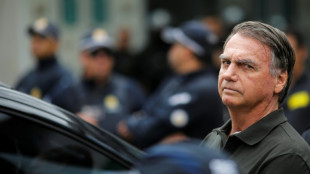 Brazil's Bolsonaro detained for trying to break ankle bracelet and flee
Brazil's Bolsonaro detained for trying to break ankle bracelet and flee
-
Slot takes blame after Liverpool stunned by Forest

-
 Lampard hails 'outstanding' Coventry after comeback win over West Brom
Lampard hails 'outstanding' Coventry after comeback win over West Brom
-
Thousands rally in France after murder linked to anti-drug activism

-
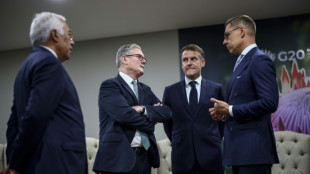 Geopolitical fractures and Ukraine worries sap G20 summit
Geopolitical fractures and Ukraine worries sap G20 summit
-
Robertson praises reshuffled All Blacks after Wales mauling

-
 Spain to face Italy in Davis Cup final
Spain to face Italy in Davis Cup final
-
Ukraine, US to hold Geneva talks on Trump's plan to end war
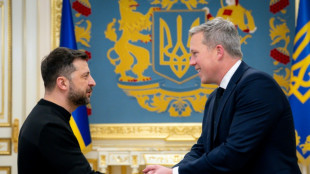
-
 Lewandowski will remember scoring first goal at new Camp Nou 'forever'
Lewandowski will remember scoring first goal at new Camp Nou 'forever'
-
Thousands march in France to demand action on violence against women

-
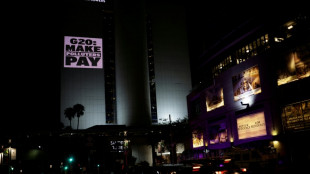 S.Africa G20 declaration highlights: minerals, debt, climate
S.Africa G20 declaration highlights: minerals, debt, climate
-
Barca thrash Athletic to inaugurate rebuilt Camp Nou in style

Tariffs roil U.S.–India ties
A rupture is widening between the world’s largest and oldest democracies, and its shockwaves are already rippling through trade, technology, and security. In Washington, tariffs have become the blunt instrument of choice. In New Delhi, officials weigh retaliation and diversification. Between them lies a relationship strained by economic coercion, immigration politics, and unresolved security grievances.
In early August, the United States announced an additional blanket import tax on Indian goods—on top of existing duties—pushing levies on some exports to levels few partners face. The measure is framed as punishment for India’s continued purchases of Russian crude and as part of a broader “reciprocal” tariff agenda. Whatever the intent, the signal is unmistakable: trade, once the ballast of the partnership, is now a pressure point.
The economic fallout is immediate and visible. Export orders for high-exposure sectors have slowed sharply, and factories in India’s most globally connected clusters report cuts to shifts and payrolls. U.S. buyers, facing higher landed costs, are postponing or cancelling shipments; Indian suppliers, squeezed between thin margins and weak demand, are trimming production. Prices for some U.S. imports are set to climb, with industry groups warning of pass-through effects for consumers.
Immigration, for decades a bridge between the two nations, is becoming another fault line. With new rulemaking floated in Washington, the H-1B program—through which Indian professionals make up the overwhelming majority of skilled visas—is again under the knife. Proposals to favor only the highest wages and public calls to “pause” the program altogether have rattled tech workers and employers alike. That uncertainty threatens one of the most resilient pillars of U.S.–India ties: the human capital pipeline that fuels American innovation and anchors Indian diaspora influence.
Security cooperation, meanwhile, is caught between momentum and mistrust. On one hand, defense-industrial collaboration has never looked more ambitious, with negotiations to co-produce advanced jet engines on Indian soil and a long-horizon framework to deepen interoperability. On the other, a lingering law-enforcement case from late 2024—U.S. prosecutors alleging a foiled plot to assassinate a government critic on American soil—has left scar tissue that resurfaces whenever tensions rise. The two governments say they are working the issue quietly; it still shadows the relationship.
Geopolitically, the timing could hardly be worse. Washington’s stated priority remains balancing China in the Indo-Pacific. Yet coercive tariffs on India, a cornerstone of that strategy, risk pushing New Delhi to hedge—reopening trade channels with Beijing and doubling down on groupings where Washington lacks leverage. Allies from the Pacific to Europe are watching: if tariffs replace diplomacy, informal coalitions like the Quad become harder to sustain.
In New Delhi, policymakers are calibrating their response. India’s energy calculus—discounted Russian crude that helps tame domestic inflation—has not fundamentally changed. Nor has its preference for strategic autonomy. But the costs are rising. If the new U.S. duties take full effect and persist, expect targeted countermeasures, accelerated efforts to localize critical supply chains, and fresh bids to diversify export markets away from an increasingly volatile United States.
For American business, the risks are symmetrical. Tariffs function as a tax on U.S. consumers and a drag on companies that rely on Indian inputs and talent. The more Washington signals unpredictability—on trade, visas, and technology transfers—the more boardrooms will dust off contingency plans: dual sourcing, near-shoring, or shifting investment to jurisdictions with steadier policy.
This is where leadership matters. Wise statecraft distinguishes leverage from self-harm. Diplomacy tests arguments before testing alliances. Foresight weighs tactical wins against strategic drift. When unilateral tariffs and campaign-style messaging substitute for patient negotiation, the costs compound: higher prices at home, weaker coalitions abroad, and partners who conclude that hedging is safer than alignment.
None of this is irreversible. A disciplined off-ramp exists: suspend escalatory tariff tranches pending structured talks; ring-fence high-impact sectors with temporary exemptions; codify a transparent process for visa reform that preserves merit-based mobility; and firewall law-enforcement cases from trade retaliation. Pair that with a clear roadmap on defense co-production and export controls, and the relationship can re-center on mutual interests rather than mutual recriminations.
Something serious is indeed happening between India and the United States. Whether it becomes something truly terrible depends on choices made in the coming weeks. Prudence, diplomacy, and foresight are not luxuries here—they are the strategy.

Good news about monkeypox, good news for stray dogs...

King Charles III promises 'lifelong service' to the Nation

London: Queen Elizabeth II dies aged 96

EU Medicines Agency approves booster vaccine Omicron

Earthquakes shake the Liechtenstein Parliament

Zelenskyy accuses IAEA of avoiding talks on demilitarisation

US President Joe Biden warns Trump's 'extreme ideology'

Europe's drought could be the worst in 500 years, warns researcher

Donald Trump FBI raid: Agents made unannounced visit...

Hollywood in Ukraine: are celebrities making a difference?

Shevchenko on Russia's Terror and how the war is affecting sport




